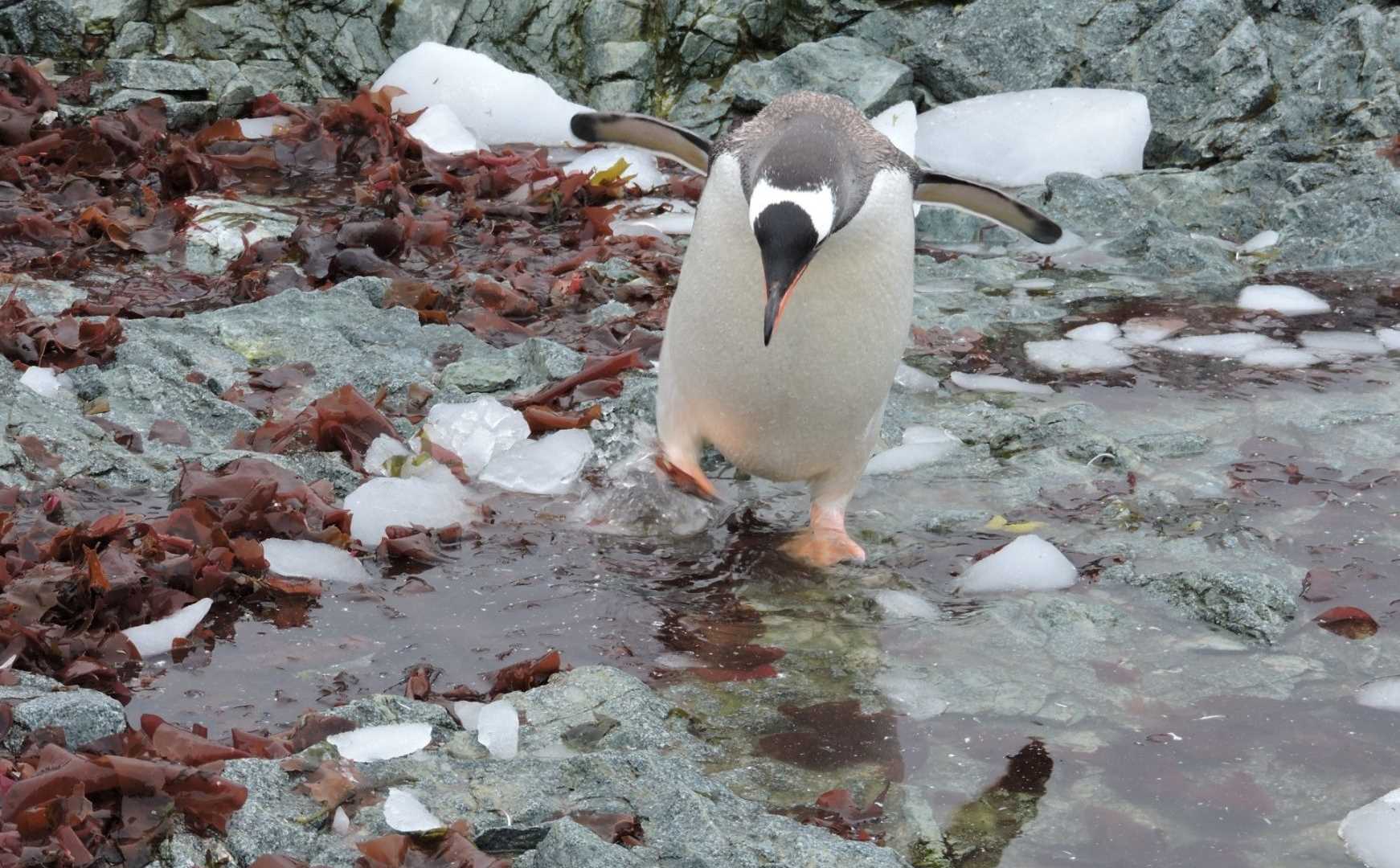We spent the morning at Georges Point, which is a rocky point on the northern end of Rongé Island, which itself is located near the western entrance of the Errera Channel. This is an important nesting site for both chinstrap and gentoo penguins. It was interesting to see that their nesting colonies are adjacent to each other, but not intermixed. However, at this time of the season, many of the larger chicks are out of their nests and have become completely intermixed as they chase their parents begging for food. It was a little slippery at the landing site as we walked carefully over algal-covered rocks, and it was amusing to watch the penguins carefully maneuver through this area just as we did. Everyone was fascinated by the complex penguin highway system. It seemed to work perfectly, in spite of the fact there were no traffic signs or traffic cops in sight.
We did not expect to see so many fur seals hanging out here, because this is far from the breeding areas in South Georgia and the South Shetland Islands. However, there were no females or pups around, so it was obvious this is what is known as a bachelor herd. These males were the ones who are too young or just not tough enough to secure a proper breeding site. Well, there’s always next year for these guys. Both red and green snow algae were common here on the snow banks of Rongé Island, and impressive amounts were also observed on some of the other nearby snow-covered land masses. It is obvious that snow algae are best developed in areas near bird colonies, since the algae are dependent upon nutrients gathered from windblown guano-rich dust, as well as moisture from the snow itself.
Our ship returned to the Gerlache Strait and we were immediately rewarded with many whale blows. There were humpback whales everywhere, it seemed. This provided us with superb whale watching during lunch and for another hour after that. We had calm seas and near perfect viewing conditions. It was what we refer to as ‘whale soup.’ The water was thick with krill, as seen with our depth sounder. These krill swarms attracted penguins, too, and there were rafts of penguins mixed in amongst the humpback whales. Chinstrap and gentoo penguins swam about in tightly packed integrated groups (perhaps as a safety strategy knowing full well that penguin-eating killer whales and/or leopard seals might be in the area).
By mid-afternoon, we were in Dallman Bay surrounded by sun-illuminated, snow-covered mountainous islands and, of course, more humpback whales. The glass calm waters and warm (well, sort of) sunshine made this a perfect place to organize a polar plunge. Our fearless ‘swimmers’ jumped off the lower Marina Deck into the frigid water and then climbed back aboard as fast as humanly possible on the deck ladder…to the applause of admiring spectators.
The rest of the afternoon was spent sailing northward through Dallman Bay, from which we reentered the Drake Passage to begin our way back up to Ushuaia. We continued to see humpback whales as our ship transited the bay, and things got even more exciting as one, or perhaps two, whales breeched several times…giving us a wonderful sendoff. We encountered a gentle swell system before we left the bay, but by now everyone had developed his or her sea legs and it was no big deal. The crossing of Drake Passage was now ahead of us.







